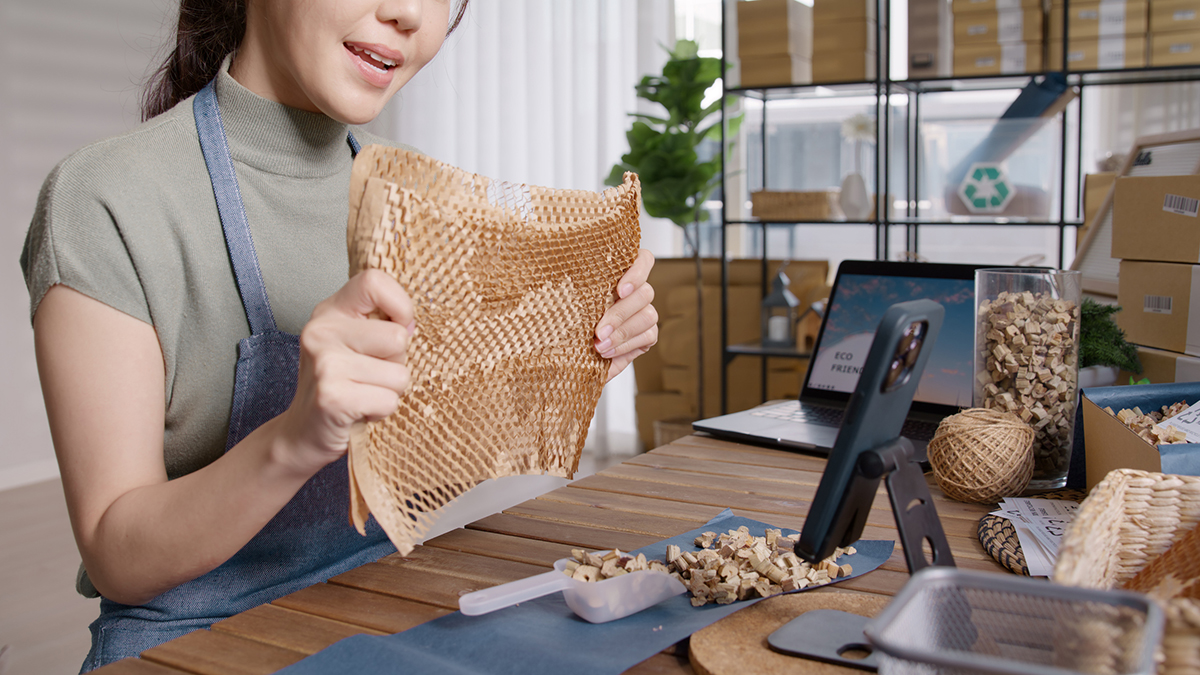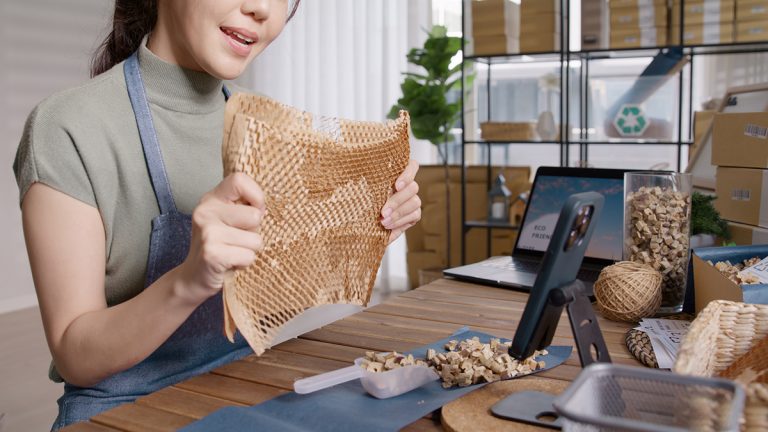When you’re in the business of selling goods to consumers, you are likely to use a lot of different materials whenever you pack and ship products. Because of this, implementing sustainable packaging practices in your eCommerce business can help to reduce environmental impact and align with the growing global demand for eco-friendly solutions.
Sustainable packaging in eCommerce refers to the use of environmentally friendly and responsible packaging materials and practices to minimize the environmental impact associated with product packaging. Consumers are increasingly conscious of sustainability and are more likely to support businesses that prioritize environmentally friendly practices. Being more sustainable can also help you acquire more customers and boost loyalty while you’re at it.
By using sustainable packaging, eCommerce businesses can also stay ahead of regulatory requirements and avoid potential penalties or compliance issues. Strategies such as plant-based packaging, optimizing shipping, recycled packaging materials and trying not to over-pack, can all help you to be more eco-friendly in your packaging.
Let’s explore some of them here:
Right-Sized Packaging: Finding the right balance is crucial when it comes to packaging. You want to choose packaging materials that are appropriately sized for your products, minimizing the need for excessive fillers or extra space, while still providing sufficient protection for the products. This reduces material waste and optimizes shipping efficiency. Avoid excessive packaging or empty space, as it leads to unnecessary material waste.

Biodegradable or Recyclable Materials: Recycled packaging is a great way to extend the life of previously used materials. Use packaging materials that are biodegradable, compostable, or recyclable such as recycled cardboard, paper, or bioplastics made from renewable resources. You can also opt for containers and mailers that are made from previously used plastic materials such as single-use bags and bottles.
Plant-based Packaging: Plant-based options are rapidly becoming more popular in the world of product packaging. As its name suggests, it is derived from renewable resources, such as plants or agricultural by-products, making them a more sustainable choice. Many plant-based packaging materials are biodegradable or compostable, meaning they can break down naturally over time without leaving behind harmful residues. If you’re shipping bulkier items, consider selecting durable plant-based materials such as packaging made out of cornstarch and mushrooms for your products.
Minimalist Design: Simplify your packaging design to reduce the amount of material used. You can do this by eliminating unnecessary layers or non-functional components that don’t contribute to the protection of the product. Also try to pay attention to the amount of branding on your packaging. Excessive logos or graphics typically means additional printing, inks and materials which could be wasteful.
Reusable Packaging: Instead of using single-use materials that end up in landfills or require recycling, reusable packaging can be used multiple times before reaching the end of its lifecycle. Explore options for reusable packaging, such as sturdy boxes, pouches, containers, or bags, that customers can reuse for storage or other purposes. Encourage customers to reuse or recycle the packaging through clear instructions or incentives.
Fillers and Cushioning: When choosing sustainable fillers and cushioning materials, consider factors such as product fragility, weight, and shipping requirements. Choose eco-friendly fillers like shredded paper, biodegradable packing peanuts, mushroom packaging or air pillows made from recyclable materials. These provide cushioning while minimizing environmental impact.

Collaborate with Suppliers: Assess potential suppliers’ commitment to sustainability. Inquire about their materials sourcing, manufacturing processes, and waste reduction strategies. Engage with your packaging suppliers to source sustainable materials and explore innovative packaging solutions. Work together to find eco-friendly options that align with your business requirements.
Share recycling best practices: Inform and educate your customers about your sustainable packaging practices. Include a note or label on the packaging, highlighting the eco-friendly materials used and encouraging them to recycle or reuse the packaging. You can also educate your customers on the best ways to recycle and dispose of your packaging materials. Educate customers about the environmental benefits of reusable packaging, fostering a sense of environmental responsibility and encouraging participation.
Optimize Shipping: Look for more efficient shipping methods wherever you can to reduce carbon emissions. Consider reducing your ecological footprint by reducing the packaging materials you use. This means using smaller boxes, bags, and containers for your products. Not only does this help you be more sustainable, it can also lower your shipping costs.
Remember, sustainable packaging is a journey, and small changes can make a significant impact. Strive for continuous improvement while balancing customer satisfaction, product protection, and environmental responsibility. By adopting sustainable packaging, eCommerce businesses can contribute to reducing waste, minimizing environmental impact, and enhancing their brand image.









